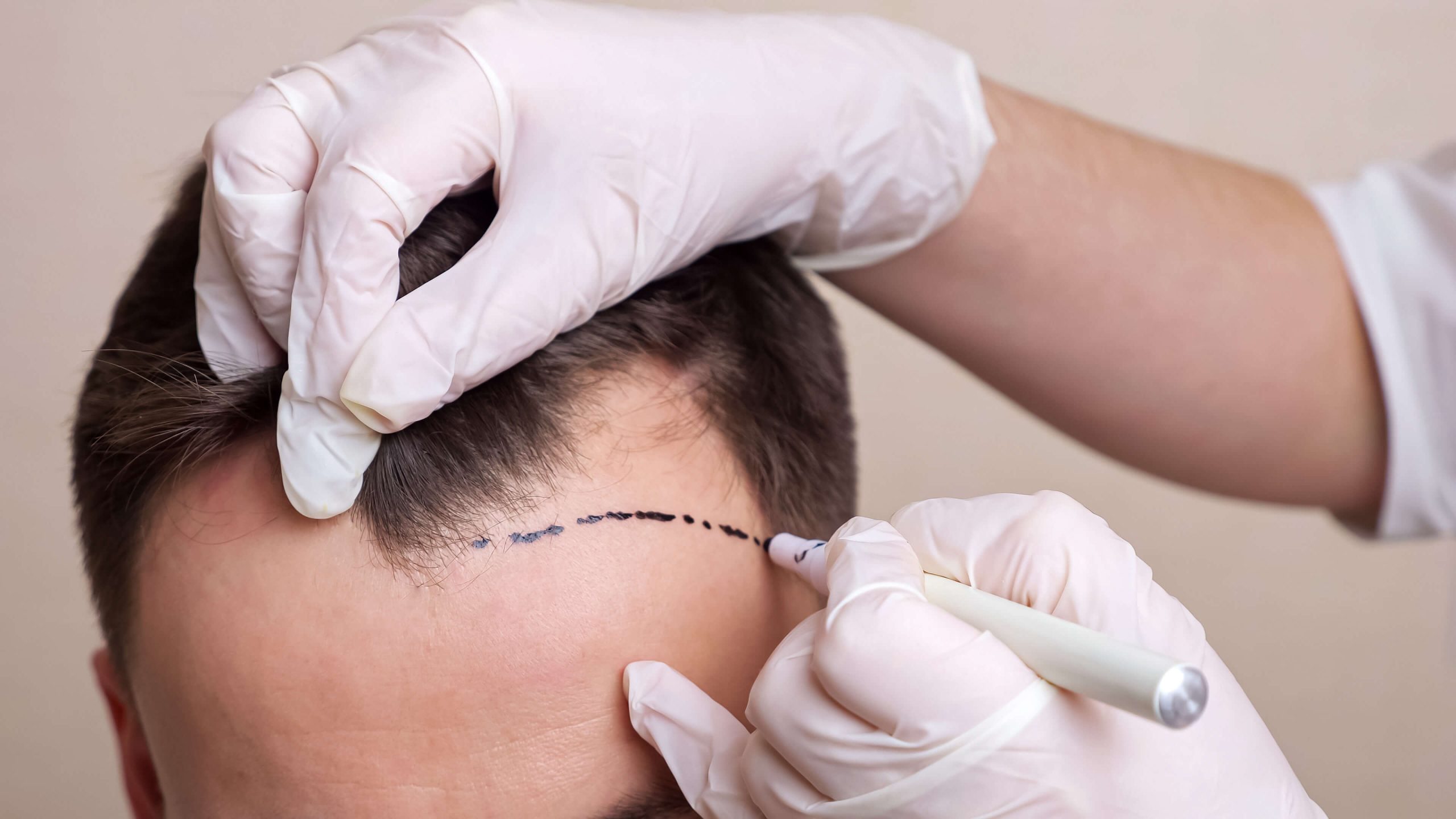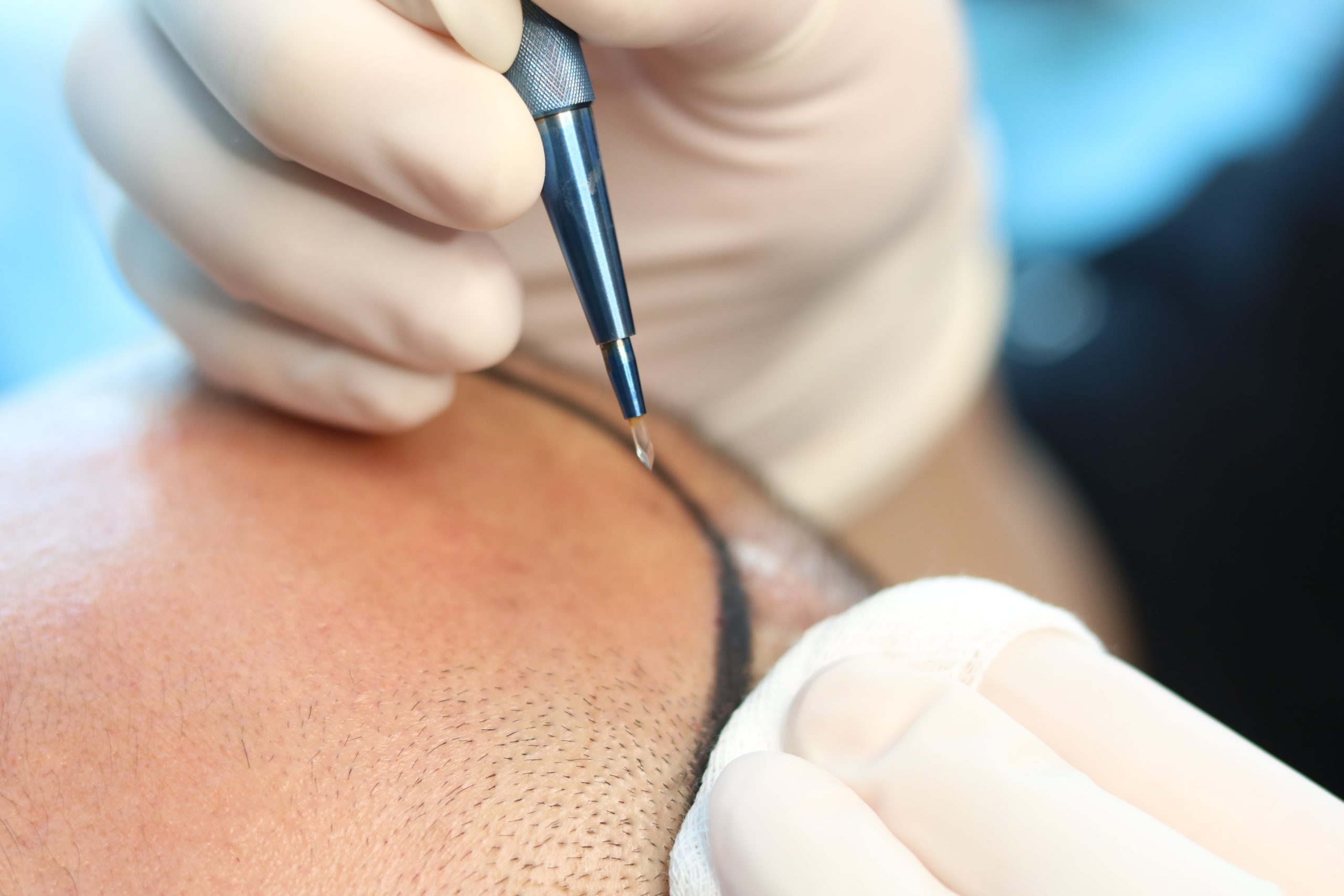What are the Best Techniques in Hair Transplantation?
What is Hair Transplantation?
Hair transplantation is the process of taking hair from dense areas in people experiencing hair loss and transplanting it to sparse areas. This technique is based on the principle of harvesting and transplanting stem cells in accordance with the natural direction of hair growth. Hair transplantation is a surgical operation and should be performed by specialist physicians.
Hair transplantation is generally performed by two methods: FUE (Follicular Unit Extraction) and FUT (Follicular Unit Transplantation). In the FUE method, hair follicles are removed one by one and transplanted, while in the FUT method, a strip is cut from the scalp, this strip is divided into pieces and transplanted.
Both methods have their own advantages and disadvantages. While the FUE method is considered a less invasive method, larger areas can be transplanted in the FUT method. The best one among hair transplantation techniquesIt should be determined according to the person's hair structure, the degree of hair loss and the result they expect. By reaching Selda Center the best hair transplantation technique for you you can learn.
Hair transplantation requires a certain process after the procedure and proper care may affect the result. For this reason, the doctor's recommendations should be taken into consideration before and after hair transplantation.
Hair Transplantation Methods
Hair transplantation is a common plastic surgery practice today and is performed using different techniques. The most common hair transplantation methods are:
- FUE (Follicular Unit Extraction): The FUE method, which is the most commonly used method in hair transplantation, allows hair follicles to be removed one by one and transferred to the area to be transplanted. It is a minimally invasive technique and accelerates the patient's recovery process.
- FUT (Follicular Unit Transplantation): In the FUT method, a strip of scalp is taken, this strip is divided into pieces and placed on the area to be transplanted. The FUT method allows larger grafts to be transplanted and is generally preferred in the treatment of larger areas of baldness.
- DHI (Direct Hair Implantation): DHI hair transplantation technique uses a special pen to extract and transplant hair follicles. Since the channel opening process is minimal in this method, the healing process is fast and the hair transplantation results have a natural appearance.
Which of these methods is preferred may vary depending on the person's hair structure, degree of baldness and aesthetic goals. The most appropriate method should be determined as a result of the evaluation made in line with the recommendations of a specialist surgeon.
Stem Cell-Supported Hair Transplantation
Stem cell-assisted hair transplantation is a technique that has become very popular in recent years. This technique involves using stem cells in hair transplantation. Stem cells are special cells found in our body that can transform into different cell types. Using stem cells in hair transplantation provides healthier and more permanent results.
One of the most commonly used methods among stem cell-assisted hair transplantation techniques is stem cell-enriched fat injection. In this technique, the fat tissue taken from the patient is subjected to special processes, the stem cells in it are enriched, and this enriched fat is injected into the scalp. In this way, it is aimed for the hair to grow healthier and for the transplanted hair to be more permanent.
Another stem cell-assisted hair transplantation technique is hair transplantation with stem cell therapy. In this technique, stem cells are first injected into the area where hair follicles will be transplanted. Then, hair follicles are transplanted to this area and the stem cells are expected to enable the hair follicles to adhere and heal faster.
Stem cell-assisted hair transplantation can offer more effective and healthier results than other traditional hair transplantation methods. However, determining the most appropriate hair transplantation technique for each patient will be possible as a result of a detailed evaluation by a specialist doctor.
FUE hair transplant
FUE technique (Follicular Unit Extraction) is one of the most modern and widely used techniques in the field of hair transplantation. In this technique, hair follicles are removed one by one and transplanted. Since FUE hair transplantation is a less invasive procedure compared to other methods, the recovery process is faster and leaves minimal scars. This technique is also very effective for preserving the natural appearance of the hair.
FUE hair transplantation is usually performed under local anesthesia and causes minimal pain for the comfort of the patients. The technique must be applied meticulously by hair transplantation specialists and requires experience and mastery to achieve successful results. The FUE method is generally recommended for individuals who have sparse hair or have baldness problems.
This technique is performed using a micromotor or manual punch to remove hair follicles. While the micromotor speeds up the process, the manual punch method offers a more controlled and meticulous working opportunity. It is important for both methods to cause minimal damage to the hair follicles and for the transplantation results to look natural.
FUE technique is a method that requires modern technology and expertise to achieve successful results in the hair transplantation process. When applied properly, it is possible to have natural and permanent hair.
FUT Hair Transplant
FUT (Follicular Unit Transplantation) is one of the oldest and most widely applied methods among hair transplantation techniques. In this technique, a strip-shaped tissue is taken from the scalp, the follicular units are separated and prepared for transplantation. FUT hair transplantation is generally preferred to restore larger areas of baldness.
FUT hair transplantation process consists of the following steps:
- Removing strip-shaped tissue from the scalp
- Separation of follicular units by examining the tissue piece under a microscope
- Preparation of separated follicular units for transplantation
- Planting follicular units in the recipient area
The advantages of the FUT hair transplantation technique include the ability to restore larger areas of baldness at once, the frequency of transplantation being higher, the hair follicles being more resistant to external factors, and the shorter operation time. However, there is a risk of scarring with this technique.
FUT hair transplantation is a technique that can provide effective and permanent results for suitable candidates. Before the hair transplantation procedure, it should be decided which technique will be used after a detailed evaluation by a specialist physician.
DHI hair transplant
DHI is the abbreviation of “Direct Hair Implantation”. This technique is based on harvesting and transplanting hair follicles one by one, similar to the FUE method, but the biggest difference between them is the method applied to the area where the hair follicles will be transplanted. DHI hair transplantation allows hair follicles to be transplanted directly to the targeted area using a special pen. In this way, direct transplantation is ensured without opening the channels.
DHI hair transplantation has a faster recovery process than other techniques because it is a minimally invasive technique and usually does not require stitches. In addition, less bleeding and edema formation after hair transplantation are among the advantages of the DHI method. For this reason, patients generally prefer DHI hair transplantation.
DHI hair transplantation method is an ideal option for those who want to achieve more natural results. In this technique, hair follicles remain healthier as they wait for a shorter period of time and provide faster adhesion to the transplanted area. Additionally, determining the hairline and transplanting hair follicles can be done more precisely.
DHI hair transplantation may be a little more costly than other techniques, but this additional cost is considered worthwhile considering the advantages it provides. As a result, DHI hair transplantation stands out as one of the best techniques for those looking for natural results and a fast recovery process in hair transplantation.
Hair Transplantation Stages
The hair transplantation process consists of the following basic stages:
- Inspection and Evaluation: Before starting the hair transplantation process, experts evaluate the patient's hair structure, the amount of loss and the donor area suitable for hair transplantation.
- Determining the Hairline: One of the most important steps in the hair transplantation operation is to determine the hairline that looks most natural and aesthetic on the patient's face. This step can determine whether the transaction outcome will be successful or not.
- Anesthesia Application: During hair transplantation, local anesthesia is applied for a painless procedure. In this way, the patient does not feel any pain during the procedure.
- Application of FUE or FUT Technique: The most commonly used techniques in hair transplantation are FUE (Follicular Unit Extraction) and FUT (Follicular Unit Transplantation) techniques. While in the FUE technique, grafts are taken one by one, in the FUT technique, the scalp is cut into a strip and the grafts are removed.
- Channel Opening: Channels are opened in the areas where the grafts will be planted. This step ensures that the grafts to be transplanted are placed in a natural direction and frequency.
- Placement of Grafts: The previously taken grafts are placed one by one into the opened channels. Grafts placed at the right angle and density increase their chance of adhesion.
- Healing Process: The healing process after hair transplantation is important. The points that need to be taken into consideration after the operation are explained to the patient in detail by the experts.
Meticulous implementation of these steps ensures successful completion of the hair transplantation process.
By paying attention to these suggestions, you can have a healthier process and achieve successful results before and after hair transplantation. Suits you Which is the best method for hair transplantation? You can get information from our experts by using Selda Center's free online examination line to decide whether




